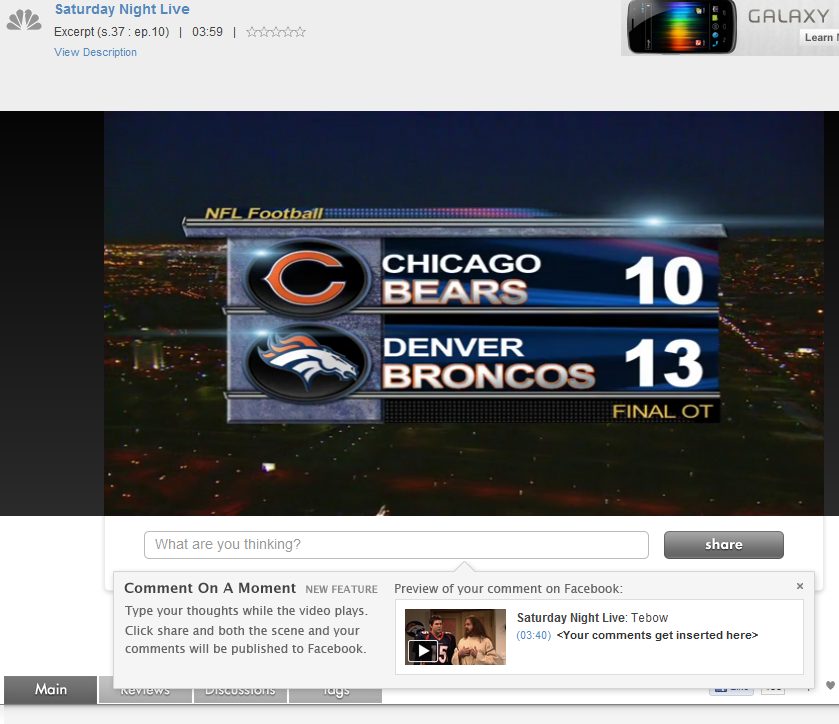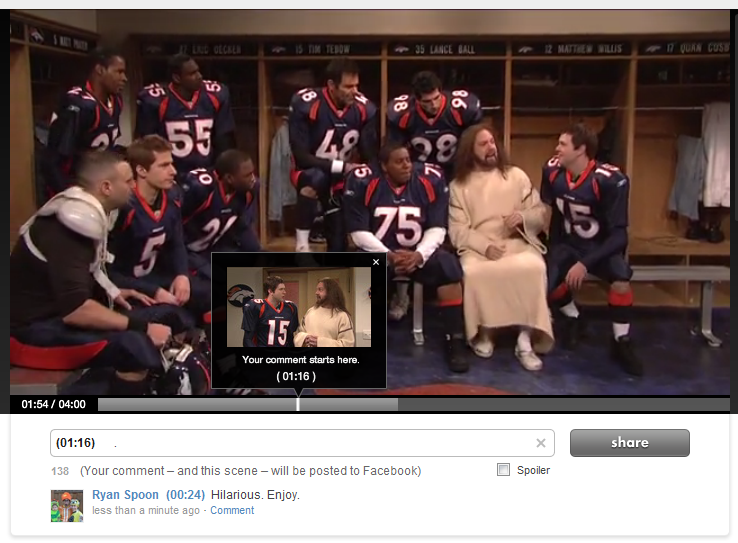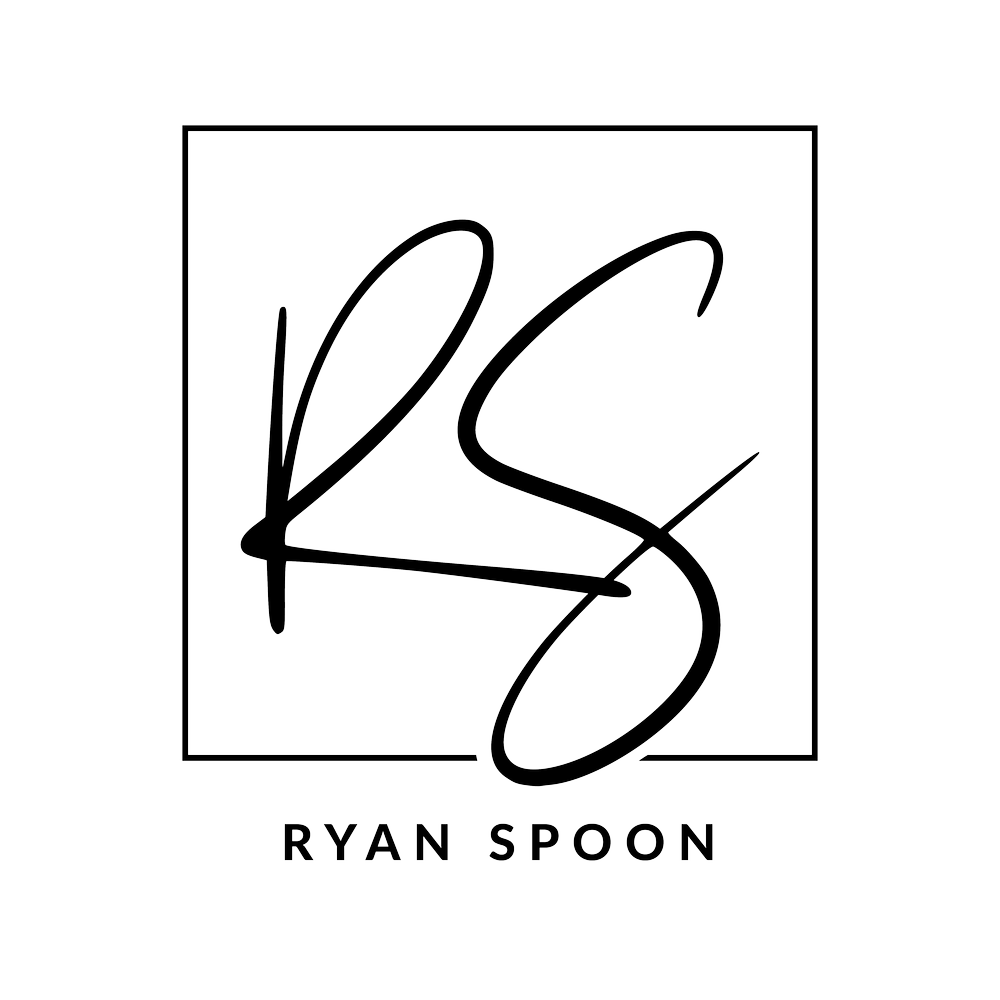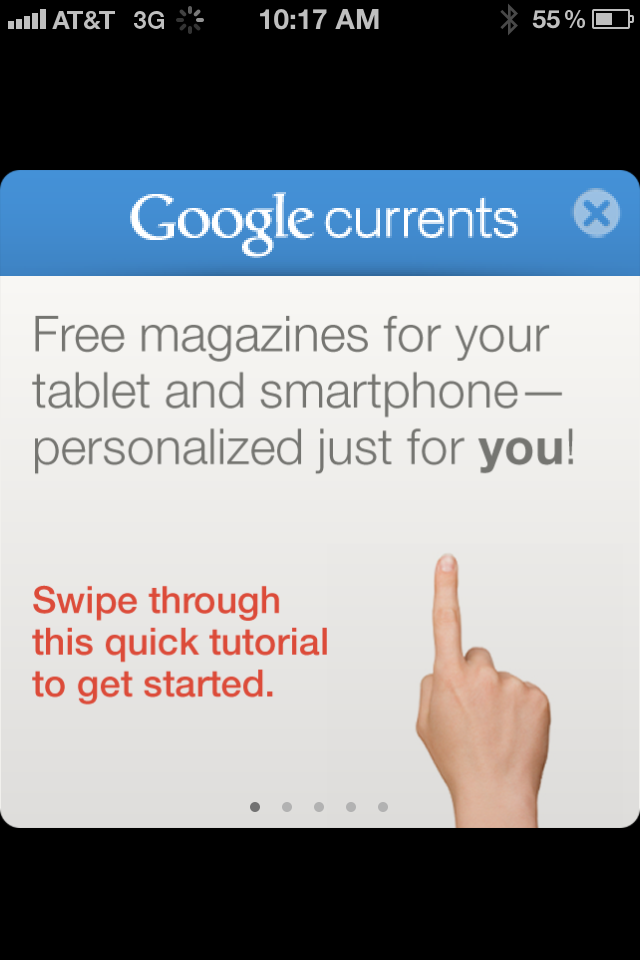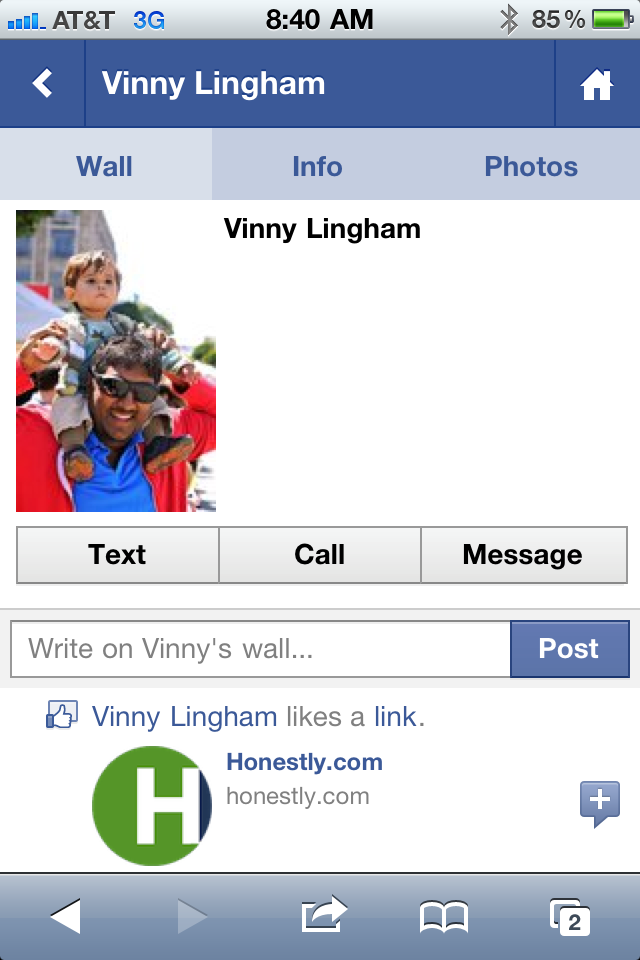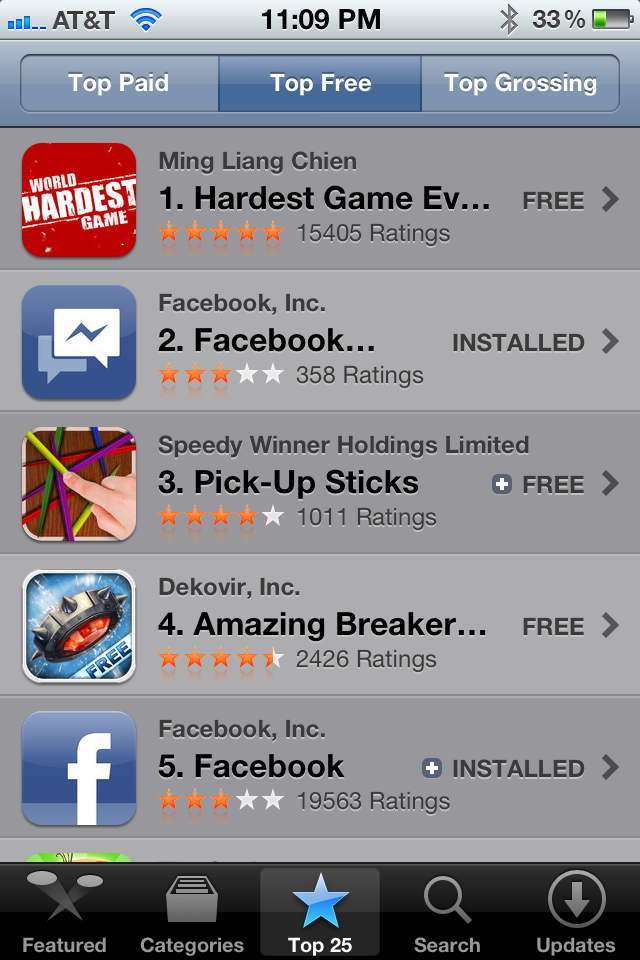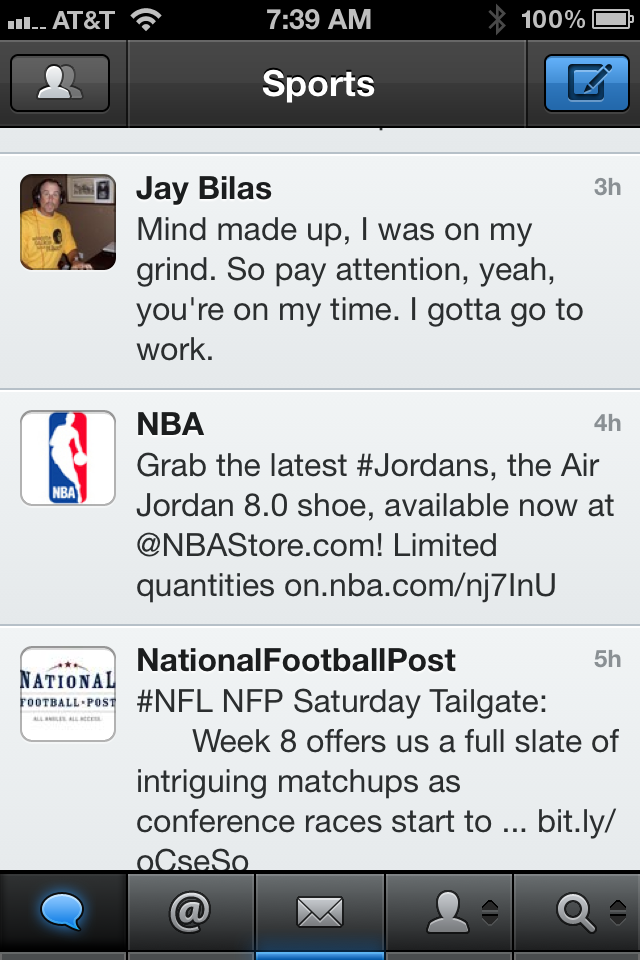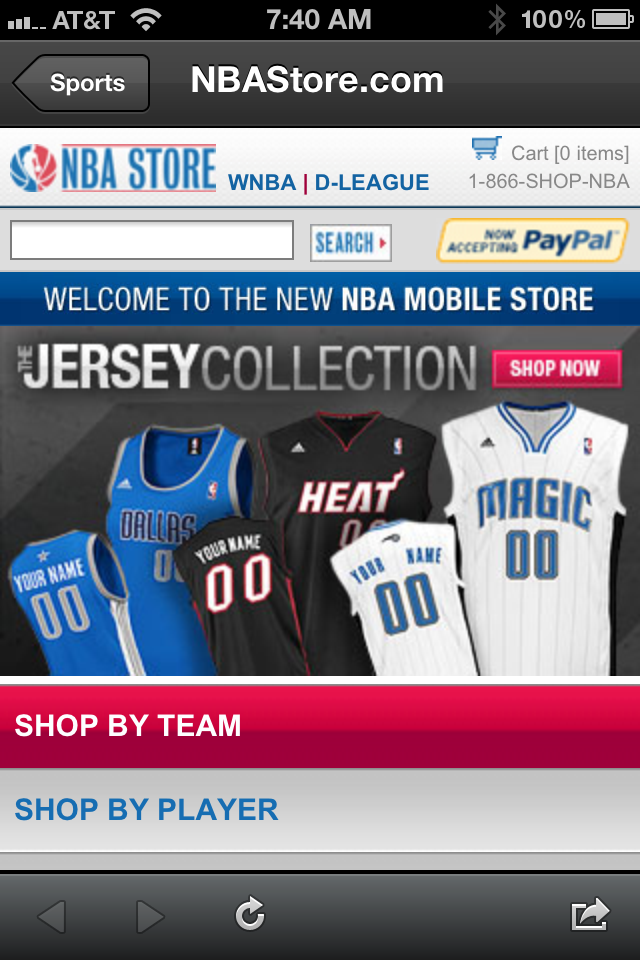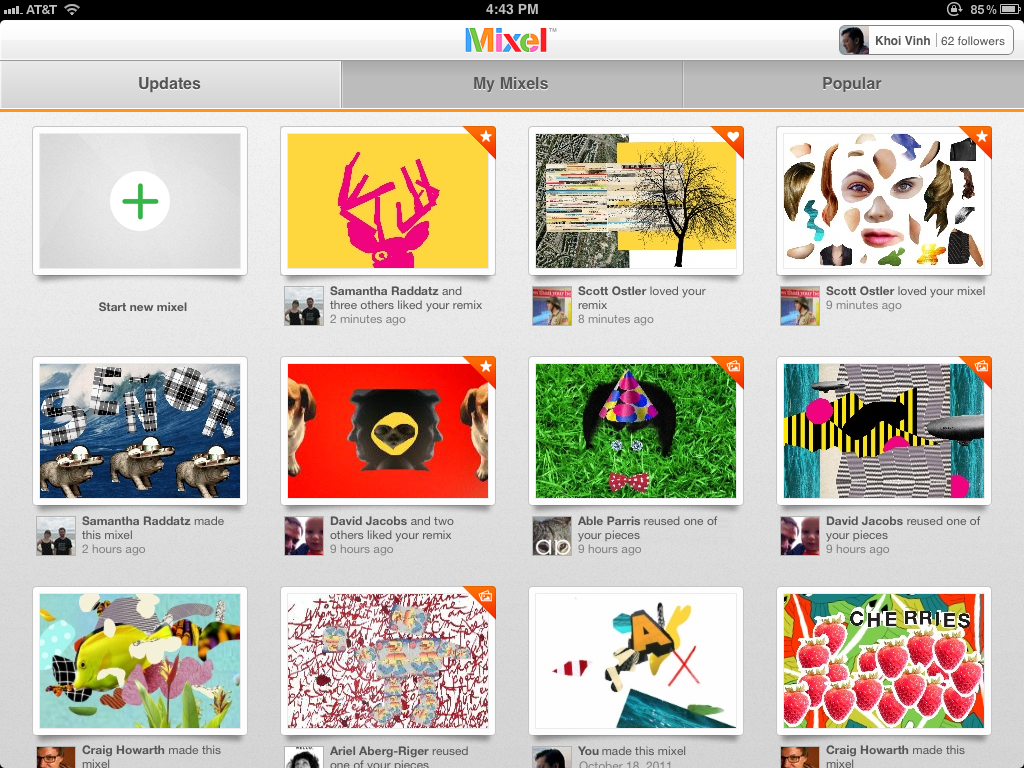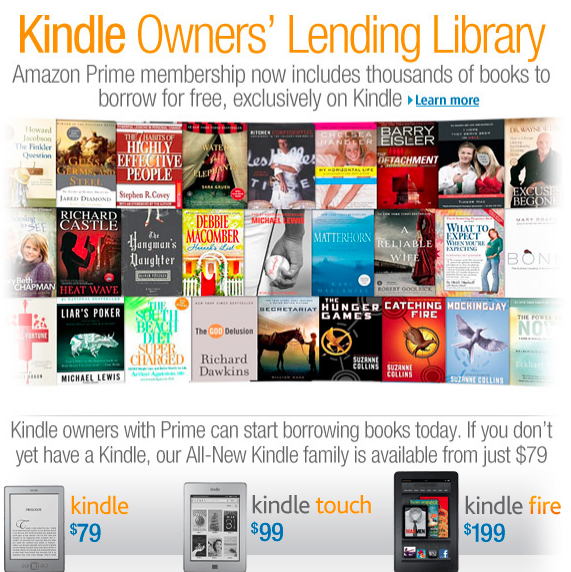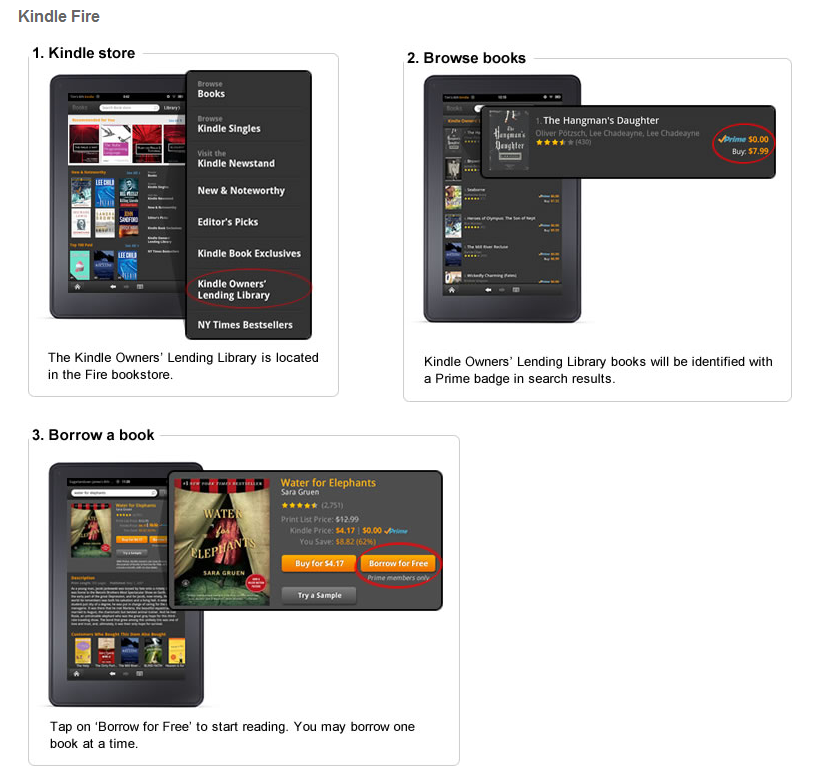Hulu has introduced a new sharing mechanism that does two things: 1. It allows users to comment specifically on 'moments'. That then publishes the specific scene to your Facebook wall and stores your comment at the specific moment within the timeline. At scale that creates a very interesting concept: a dialogue that moves along the video's entire timeline. At scale that also poses a problem: will I want to read all of that content? Not sure... but interesting.
2. The preview UI is terrific. This is what first caught my eye: the pop-up box showcases the specific screenshot, comment and formatting that will appear on Facebook. That's really good-looking, unique and powerful.
Why is it potentially powerful: first, because I think users like to feel control over what is published and this is a visually, fully controlled experience. Second, it is different... and that means that users will drawn to it (as compared to a standard like button).
I really like this experience and don't see why it can't be applied to other visual mediums like e-commerce.
